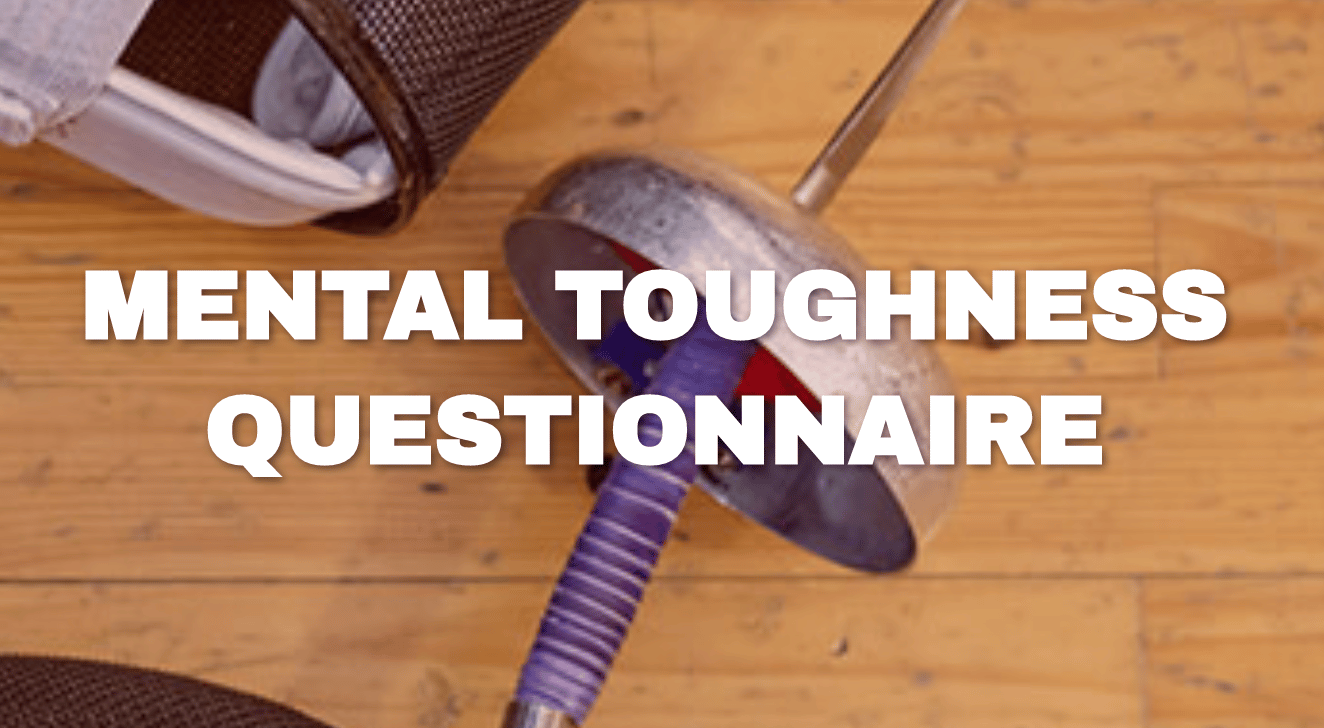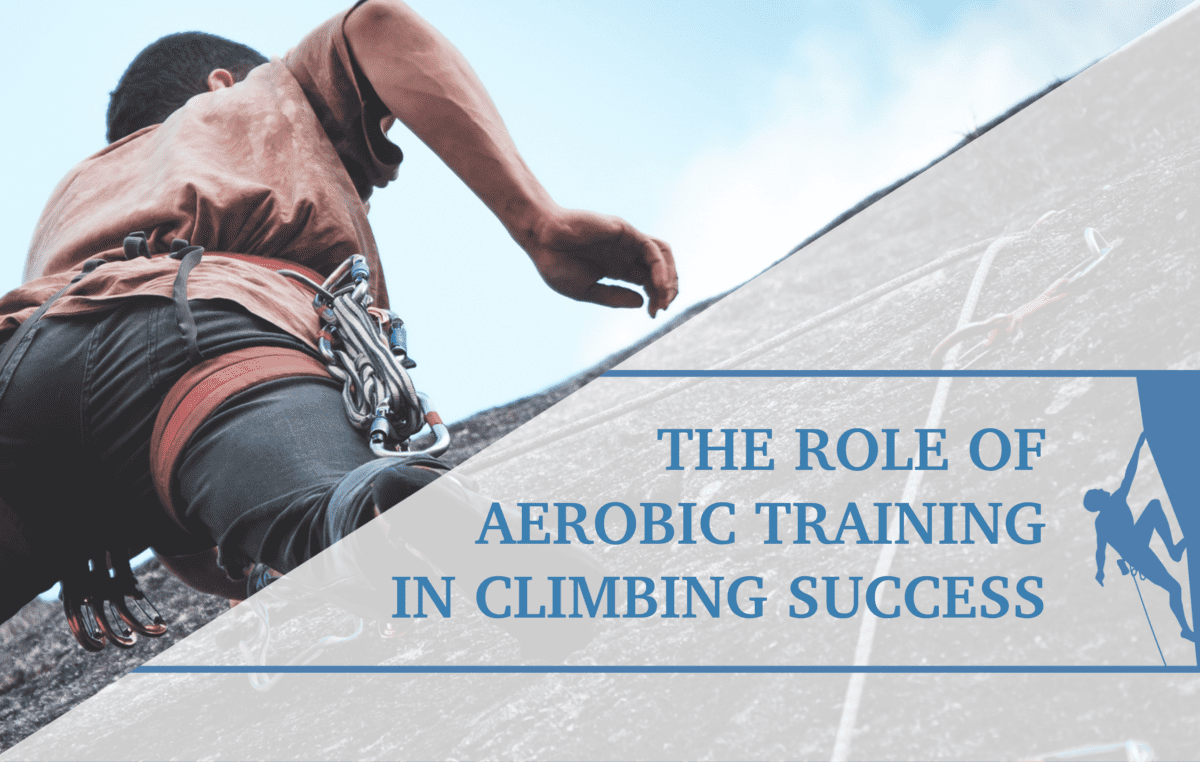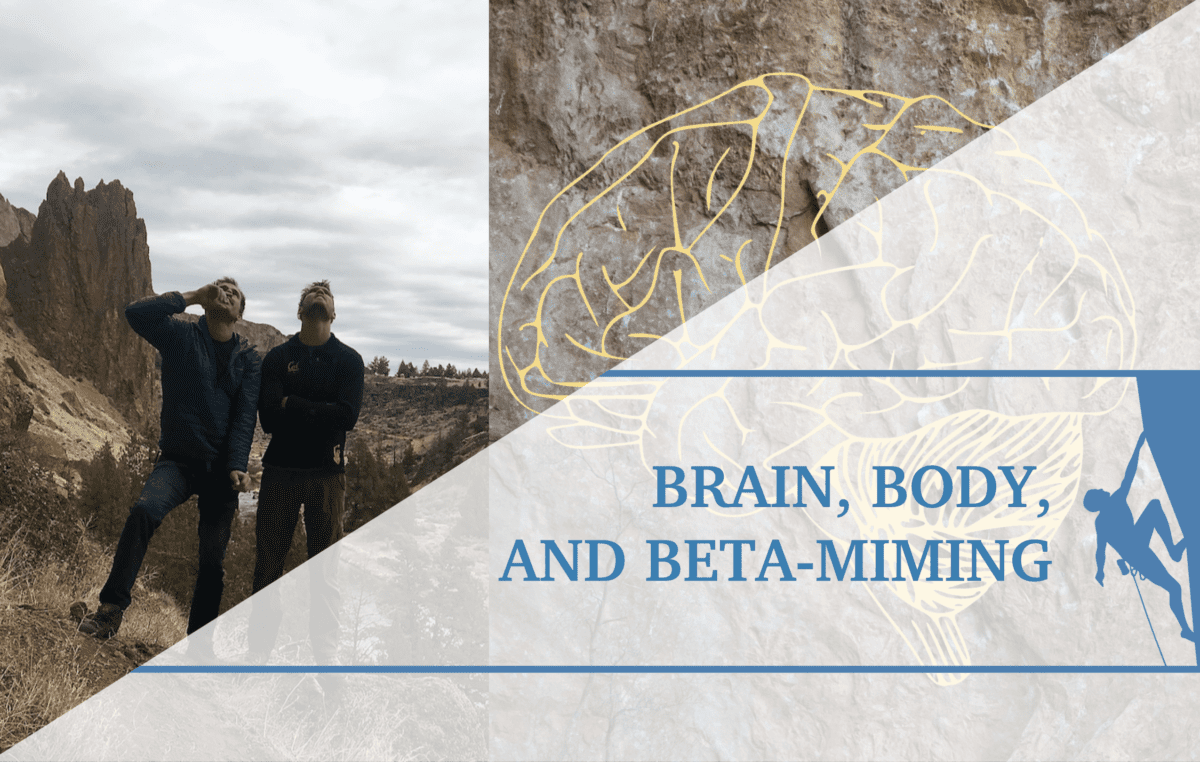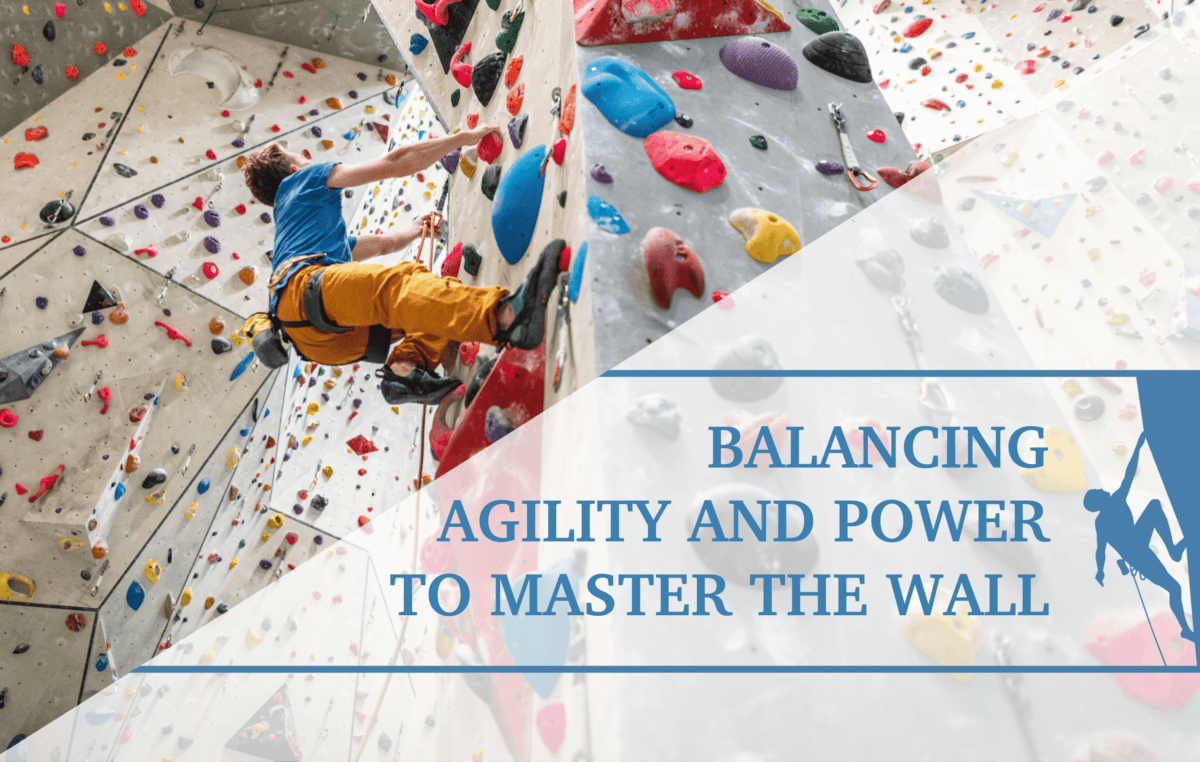Overcome Mental Setbacks to Optimize Climbing Performance
You’re at the crux of the climb. Your arms are pumped, legs shaking, the pain in your fingertips creeps down into your forearms and lights them on fire. Yet, all you can focus on is the endless ping-pong of mental chatter that screams all the reasons why you should give up, let go, and give in to the stress of it all. It feels just too unbearable. Plus, your thoughts of self-doubt are very convincing.
- “You’re not strong enough”
- “You are going to fall”
- “You’re going to get hurt”
- “You’re not ready for this level of climbing”
Any of these sound familiar? It is well known that climbing requires incredible strength and fitness. However, less talked about is the mental strength required for strong climbing. Climbers are faced with stressful situations. After all, falling can result in a real possibility of injury. Addressing mental deficits can help climbers reach their optimal performance and make climbing overall more enjoyable. Just like rehabbing an injury, changing unhelpful thought patterns takes time, effort, and progressive challenge to improve. Want to climb at your optimal performance? A physical therapist can enhance your movement pattern so you climb more effectively and efficiently, prevent injury, as well as improve your mental game.
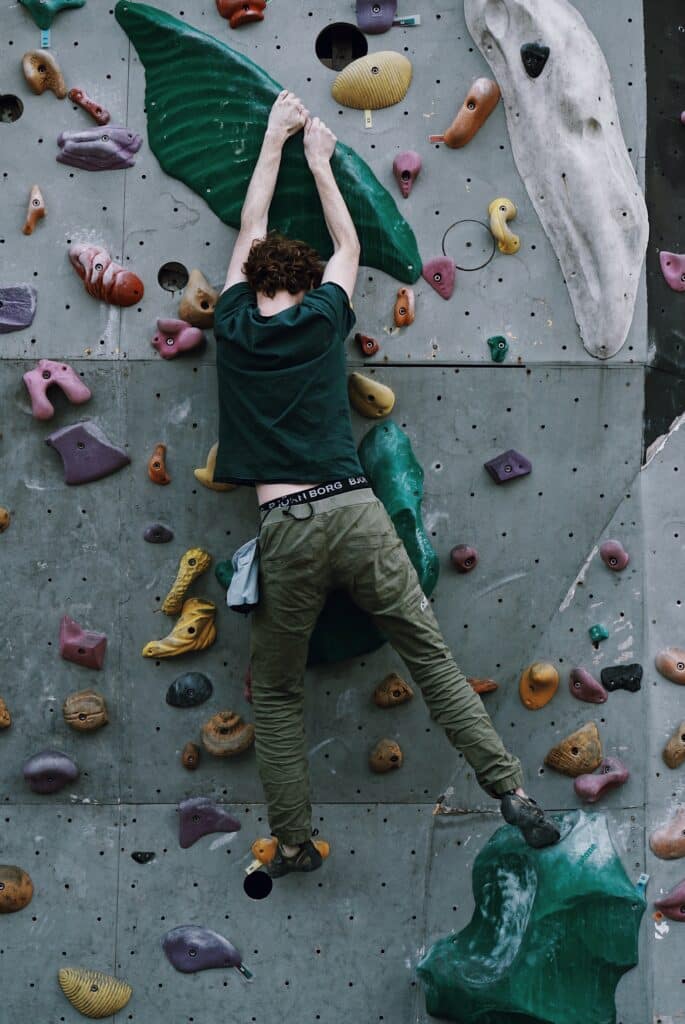
Why does this happen?
One common factor that most mental blocks have in common is the prevalence of misdirected attention due to excuses, fears, and doubts. This happens to everyone, it’s simply the brain responding to potential danger and trying to protect us. It can take shape in the form of: negative self-talk, anxious overthinking, a plethora of great excuses, and hyper-focus on falling. Negative self-talk can reduce your confidence in your abilities and lower your ability to see opportunities and capitalize on them. You are talking yourself out of climbing to your full potential. Making excuses can look like
- “The hold is too small”
- “It’s just too hard”
- “I am too tired’
- “I’m so hungry”
- “It’s too cold”
- “I’m too old”
While some of these excuses might have some validity, feeding into these excuses could be what is holding you back. Anxious overthinking is misdirected attention with added feelings of worry, nervousness, unease, and/or apprehension. The body can physically respond to the stress of anxiety and reduce your ability to climb. The brain is strategic and very persistent. However, you have the ability to look at your excuses, fears, and doubts with curiosity and learn to overcome them to live up to your full potential.
How to Identify it the Mental Block
The first step is to identify which mental block is holding you back the most. Bringing awareness to the thoughts that arise during the stressful moment and looking at them with curiosity and intention to learn can help you overcome them. The issue is that with an unhelpful thought comes an unhelpful reaction. If we are aware of the thought, make efforts to change it, we can change the reaction. Additionally, a mental toughness questionnaire can help you pinpoint your setbacks and work on them. One I found to be particularly eye opening is by Dr. Alan Goldberg, who works with athletes across all sports and levels from junior competitors to olympic athletes. The questionnaire is a series of thirty true/false questions that break down the score into 6 categories: rebound ability, pressure, concentration, confidence, and motivation. If you score below 5 in any one category this demonstrates an area that you can work on. Some t/f questions include, “I think too much about what could go wrong right before and during performance”, “I do my best when there’s more pressure on me” and “I have trouble dealing with negative self-talk”.¹ Once you identify what thoughts are holding you back, you can conquer them. Don’t try to ignore or run from them as this will only make them stronger. The best thing you can do is accept them and ask why this thought is coming up.
Click here or on the image above to take the questionnaire
Real Risk vs Not Real Risk and Why it Matters
Let’s be honest, sometimes there is real risk in climbing that should not be overlooked. The key is to identify which thoughts are helpful for safety and which are not. After all, our fears are there for a reason, to protect us from danger. For instance, is the fall dangerous because the first couple bolts have serious runout that could result in actual bodily damage from a fall or is your brain creating fear as a default because you are high above ground? It is important to identify the difference between real risk and fear the brain makes up. As Tracy Shawn, M.A. in psychology says,“ I am not my thoughts and feelings, but I am my actions.”² Seeing those intrusive, scary thoughts as merely unsubstantial floofs of nothingness can help you gain control of them and not believe them as fact. Once you have differentiated real risk from made up risk, it’s time to question, confront, and dive a bit deeper.
How to overcome
For instance, let’s explore the thought
- “I am afraid to fall because I am afraid of heights”
Why are you afraid of heights? Because my basic instinct is telling me it’s not safe.’ Is it actually not safe? What will happen if you fall? The rope will catch you, with the real potential of minor injury such as cuts and scrapes.
- Am I truly in as much danger as I perceive? No.”
To explore these thoughts deeper you can try journaling to gain better understanding. Now it’s time to practice under pressure. Facing a fear over and over will relinquish its power. To apply this in climbing you can start with easier routes to get accustomed to the height then progressing to harder routes where there is higher potential of falling. Also, you can practice taking falls starting small and increasing to larger ones. When you feel that intrusive thoughts come back you can repeat a mantra
- “I feel afraid, but I know I am safe”
Don’t forget to take a couple deep breaths. Deep breathing activates your parasympathetic nervous system, sending the signal to your brain to tell anxious thoughts that you are safe and don’t need to fight, flight, or freeze.³ A daily meditation practice can help build up mental resilience, focus, trust in self as well as gain awareness around breathing. If you find your mind starts to drift, gently guide it back to what you want to focus on. You can practice this on or off the wall. The right method to help you gain mental strength is the one that works best for you.
How Physical Therapy Can Help
As climbing continues to increase in popularity, climbers are seeking physical therapists not only for rehab but also to enhance performance and injury prevention.
PT’s who specialize in climbing can help climbers improve their technique, climbing efficiency, and performance level by locating areas of weakness physically and mentally. This is important because the more you train smart, the less likely you will become injured, and less setbacks you will have. For mental setbacks, physical therapists can help you identify what specifically is holding you back with a questionnaire, teach breathing techniques to activate the parasympathetic system, and construct progressive plans to improve performance. Since the mind and body are connected, you cannot improve one without affecting the other. PT’s can be a positive influence in your life to help both your mental and physical health. However, if you are interested in digging deeper into mental health, there are other resources for that as well.
Additional Resources
Another great resource to address mental blocks related to climbing are sports psychologists, such as Dr. Alan Goldberg, as mentioned previously who created the Mental Toughness Questionnaire. If you feel you have unhelpful mental chatter that affects not only your climbing but your quality of life in relationships, sleep, and concentration it may be best to see a psychiatrist or psychologist. Cognitive Behavioral Therapy (CBT) might also be a fitting option that can be provided by a therapist. CBT strategies are aimed to focus on changing unhelpful ways of thinking and learn better ways of coping. This might include facing your fears, and learning to calm one’s mind and relax one’s body, both of which can be applicable to the climbing athlete.⁴
References
- Goldberg, A. (2022, February 1). Are you mentally tough? Competitive Advantage: Mental Toughness. Retrieved February 19, 2022, from https://www.competitivedge.com/athletes/just-how-mentally-tough-are-you/#gf_8
- Tracy Shawn, M. A. (2019, July 29). You are not your thoughts. Psych Central. Retrieved February 19, 2022, from https://psychcentral.com/blog/you-are-not-your-thoughts#1
- González-V. Et. al, Use of Meditation and Cognitive Behavioral Therapies for the Treatment of Stress, Depression and Anxiety in Students. A Systematic Review and Meta-Analysis. Int J Environ Res Public Health. 2019 Nov 10;16(22):4394. doi: 10.3390/ijerph16224394. PMID: 31717682; PMCID: PMC6888319. https://pubmed.ncbi.nlm.nih.gov/31717682/
- American Psychological Association. (n.d.). What is cognitive behavioral therapy? American Psychological Association. Retrieved February 19, 2022, https://www.apa.org/ptsd-guideline/patients-and-families/cognitive-behavioral
Krista Kleinhammer, SPT
805-215-3915
Kristak525@mail.fresnostate.edu

- Disclaimer – The content here is designed for information & education purposes only and the content is not intended for medical advice.

